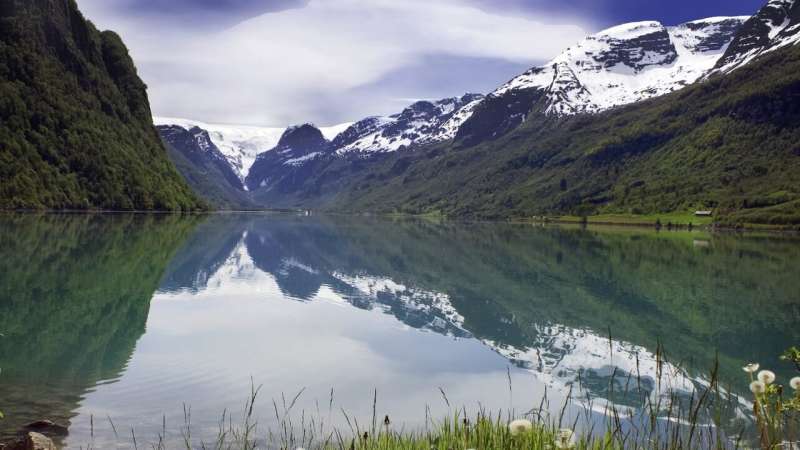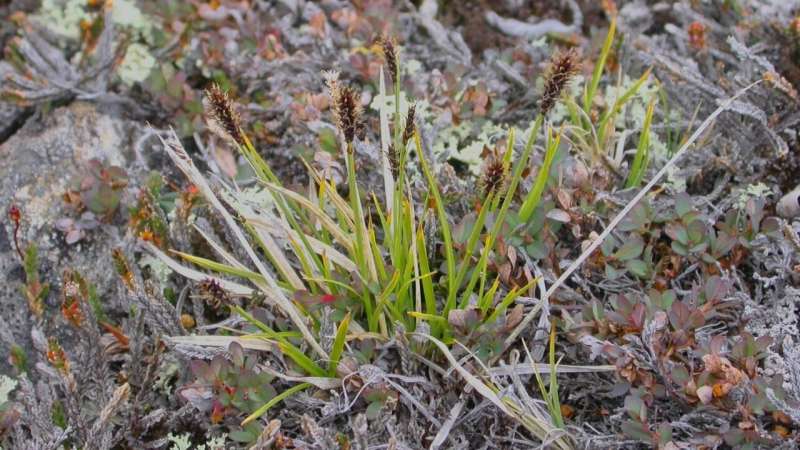Genomics provides evidence of glacial refugia in Scandinavia

Evolutionary research on a grass-like, flowering perennial called the northern single-spike sedge has offered some of the first proof of ice-free locations, or glacial refugia, in Northern Europe during Earth's most recent ice age.
Using genomic techniques, a team of researchers led by principal investigator Kristine Westergaard from the Norwegian Institute of Nature Research has found evidence that establishment of this species pre-dates the region's Weichselian glaciation, upending scientific thought regarding recolonization of northern Europe following the Pleistocene Epoch.
Leo P. Bruederle, professor emeritus in the department of integrative biology at CU Denver, along with colleagues at ETH Zurich, and Norwegian University of Science and Technology, co-authored the research with Westergaard. The study was published in February in the journal Molecular Ecology.
Surviving the Pleistocene ice age
"Our data suggest that there were dynamic refugia in Scandinavia, where the species persisted throughout the Pleistocene," said Bruederle. Today, only three populations of this species remain in Europe, with the larger part of its range in North America.
More than two million years ago, glaciers descended on the uppermost portions of North America, Europe and Asia during the Pleistocene Epoch, Earth's most recent ice age. Tough, vascular plants remained in pockets of glacial refugia, despite extremely harsh conditions.

Previously, researchers believed that the northern single-spike sedge, or Carex scirpoidea Michx subsp. scirpoidea, persisted in refugia only in Beringian Alaska and/or south of the Last Glacial Maximum in western and northeastern North America. Researchers assumed the Norwegian populations originated following a post-glacial recolonization, as has been reported for other plant species.
Researchers found that the Norwegian populations of the sedge consisted of unique evolutionary lineages that diverged from those in Greenland. Their colonization of Scandinavia appears to have occurred twice, both prior to the last glacial advance, with the Norwegian plants having survived in glacial refugia in situ.
Preventing a "genetic meltdown" in an era of climate change
The sedge's existence in Norway, and understanding the ways in which plants persisted through the Pleistocene, can inform the way we think about the future effects of climate change, said Bruederle.
While the hardy plant was able to sustain frigid ice age temperatures, it may not fare as well with a warming climate. Species are usually able to survive climate changes by shifting latitude or elevation, said Bruederle, but the fragmented populations, low level of genetic diversity, and the lack of suitable habitat may lead to a "genetic meltdown" and eventual extinction of the species in Europe.
Researchers call for managing the Scandinavian populations as distinct units to include monitoring these populations, protecting their habitat, and preserving seeds and plants.
More information: Kristine B. Westergaard et al. Population genomic evidence for plant glacial survival in Scandinavia, Molecular Ecology (2018). DOI: 10.1111/mec.14994
Journal information: Molecular Ecology
Provided by University of Colorado Denver


















